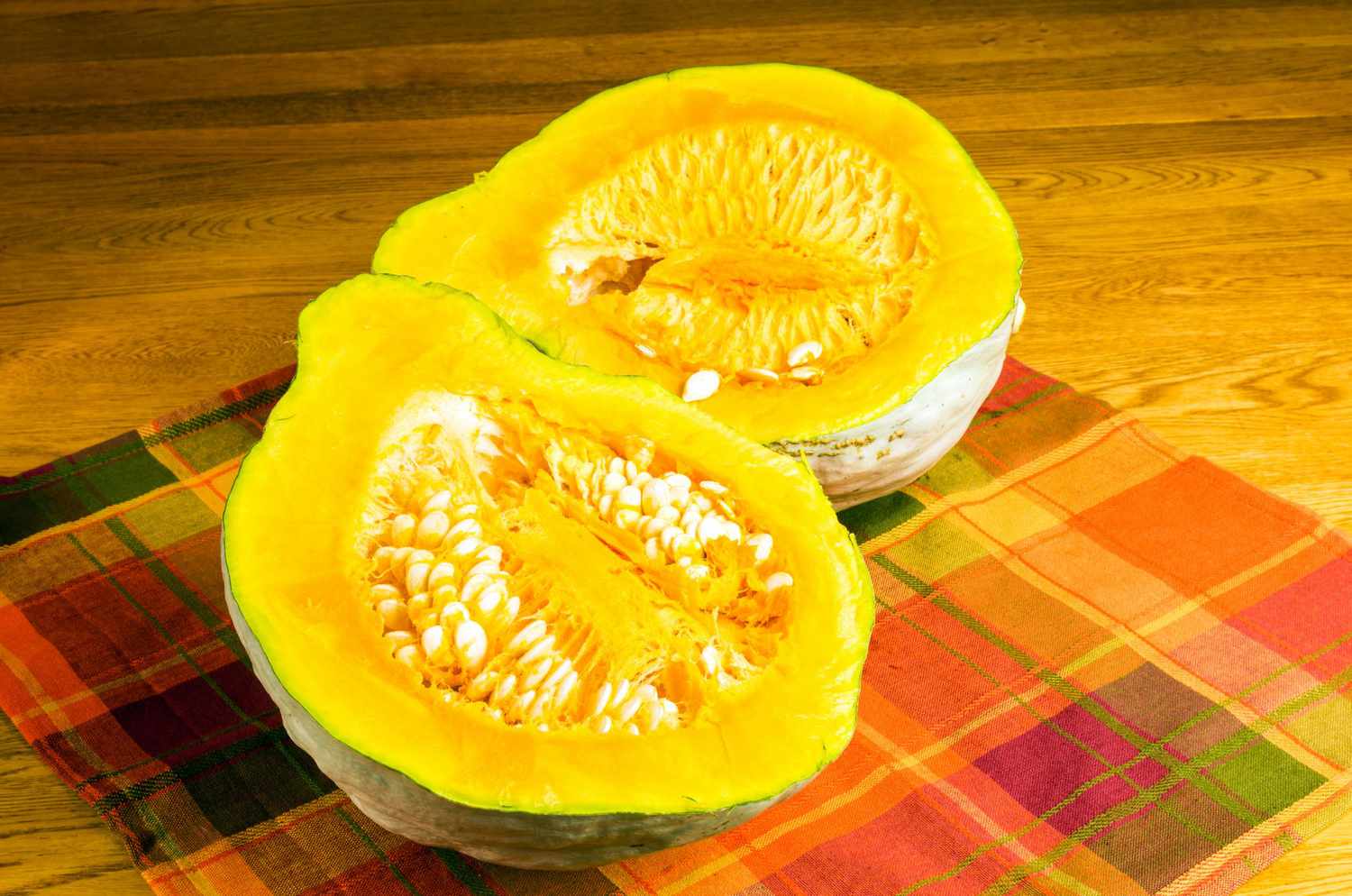
Hubbard squash is a fascinating vegetable with a rich history and unique characteristics. Ever wondered what makes this squash so special? Hubbard squash is known for its hard, bumpy skin and sweet, nutty flavor. It's a favorite in fall recipes, from soups to pies. But there's more to this gourd than meets the eye. Did you know it can weigh up to 50 pounds? Or that it was first introduced to the United States in the 1700s? Whether you're a seasoned gardener or a curious cook, these 25 facts about Hubbard squash will surprise and delight you. Ready to learn more? Let's get started!
Key Takeaways:
- Hubbard squash is a versatile winter vegetable with a tough skin and sweet, nutty flavor. It's packed with vitamins, fiber, and antioxidants, making it a healthy and delicious addition to your meals.
- Growing your own Hubbard squash is a fun and rewarding experience. With well-drained soil, regular watering, and proper harvesting and storage, you can enjoy this unique vegetable for months to come.
What is Hubbard Squash?
Hubbard squash is a type of winter squash known for its hard shell and sweet, nutty flavor. This versatile vegetable can be used in a variety of dishes, from soups to pies. Let's dive into some fascinating facts about this unique squash.
-
Hubbard squash is named after Elizabeth Hubbard, who introduced it to seedsman James J.H. Gregory in the 1840s.
-
The squash can grow quite large, often weighing between 15 to 40 pounds, though some can reach up to 50 pounds.
-
Its skin is tough and warty, making it difficult to cut but excellent for long-term storage.
-
Hubbard squash comes in different colors, including blue, green, and orange, each with slightly different flavors.
-
The flesh is bright orange and has a sweet, nutty taste, making it perfect for both savory and sweet dishes.
Nutritional Benefits of Hubbard Squash
Hubbard squash isn't just tasty; it's also packed with nutrients. Here are some health benefits you might not know about.
-
Rich in vitamins A and C, which are essential for immune function and skin health.
-
Contains a good amount of fiber, aiding in digestion and helping to keep you full longer.
-
Low in calories, making it a great option for those looking to maintain or lose weight.
-
High in antioxidants, which can help protect your cells from damage.
-
Contains potassium, which is important for heart health and muscle function.
How to Cook Hubbard Squash
Cooking Hubbard squash can be a bit tricky due to its tough skin, but the effort is well worth it. Here are some tips and methods.
-
Roasting is a popular method, bringing out the squash's natural sweetness. Simply cut it into chunks, season, and bake.
-
It can be pureed and used in soups, adding a creamy texture without the need for dairy.
-
Hubbard squash can be used in pies, similar to pumpkin, for a sweet and nutty flavor.
-
It can be steamed or boiled, then mashed as a side dish or added to casseroles.
-
The seeds are edible, and can be roasted for a crunchy snack.
Fun Facts About Hubbard Squash
Beyond its culinary uses and nutritional benefits, Hubbard squash has some interesting trivia attached to it.
-
Hubbard squash was once used as a ship ballast, due to its hardiness and long shelf life.
-
It is believed to have originated in South America, with evidence of its use dating back thousands of years.
-
The squash was popular during World War II, as it was easy to grow and store, providing a reliable food source.
-
Hubbard squash is often used as a decoration during the fall season, thanks to its unique and rugged appearance.
-
It has a long growing season, typically taking 100 to 120 days to mature from planting.
Growing Your Own Hubbard Squash
Interested in growing your own Hubbard squash? Here are some tips to get you started.
-
Plant in well-drained soil, as the squash prefers a sunny location with plenty of space to spread out.
-
Water regularly, but be careful not to overwater, as this can lead to root rot.
-
Harvest before the first frost, as cold temperatures can damage the squash.
-
Cure the squash after harvesting by leaving it in a warm, dry place for a couple of weeks to toughen the skin.
-
Store in a cool, dry place, where it can last for several months, providing a long-term food source.
Final Thoughts on Hubbard Squash
Hubbard squash isn't just another vegetable. Packed with nutrients, it offers a delicious way to boost your diet. Its versatility in recipes, from soups to pies, makes it a kitchen favorite. Plus, its long shelf life means you can enjoy it well into winter. Whether you're a seasoned cook or a beginner, incorporating Hubbard squash into meals can be both fun and rewarding. Next time you're at the market, grab one and experiment. You might find a new favorite dish. Remember, eating healthy doesn't have to be boring. With Hubbard squash, you're adding flavor, nutrition, and a touch of history to your plate. So, give it a try and see how this humble squash can transform your meals. Happy cooking!
Frequently Asked Questions
Was this page helpful?
Our commitment to delivering trustworthy and engaging content is at the heart of what we do. Each fact on our site is contributed by real users like you, bringing a wealth of diverse insights and information. To ensure the highest standards of accuracy and reliability, our dedicated editors meticulously review each submission. This process guarantees that the facts we share are not only fascinating but also credible. Trust in our commitment to quality and authenticity as you explore and learn with us.


